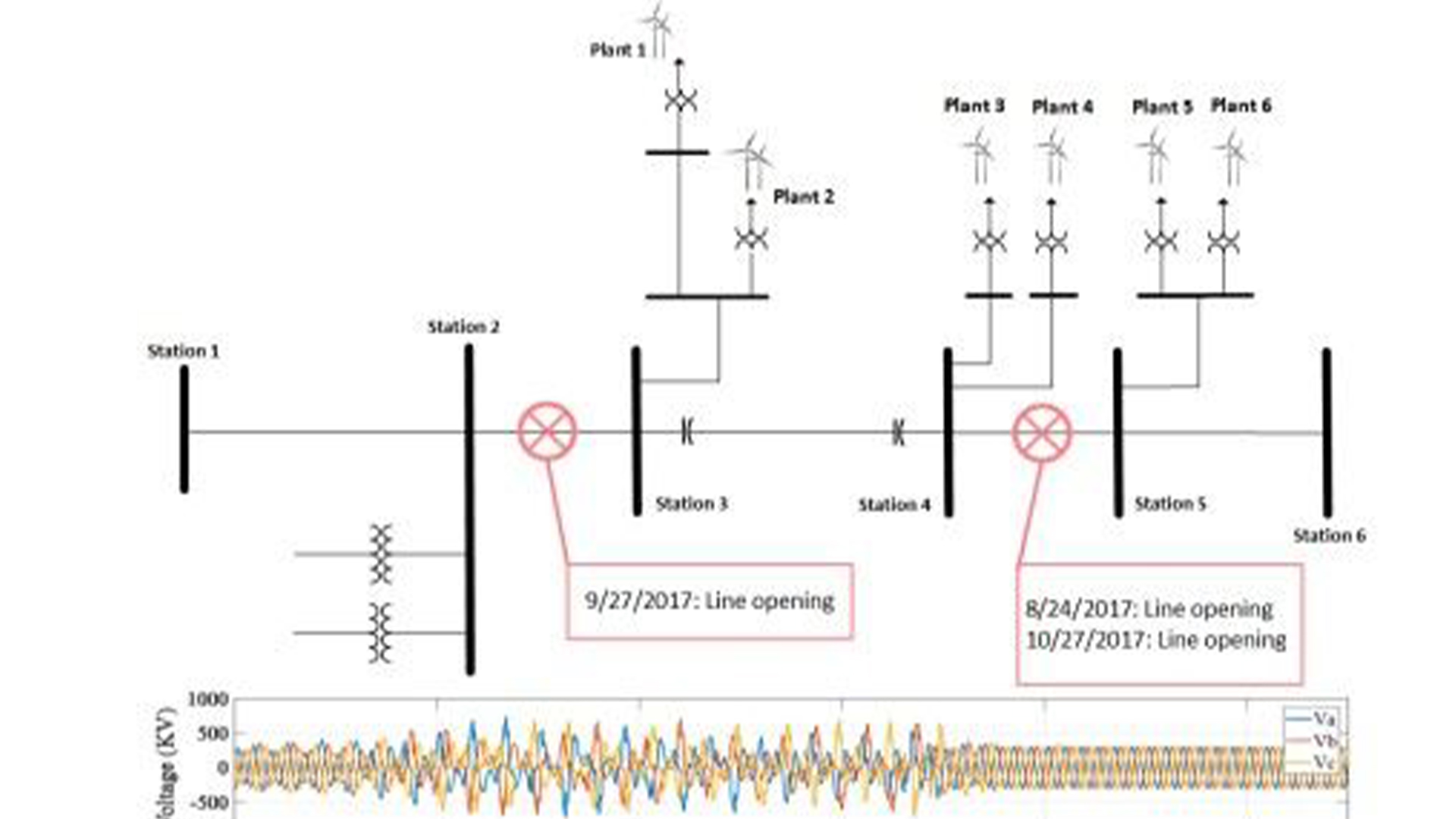The stability analysis of power systems is becoming more challenging and more complex because of the interaction between synchronous generators and a huge variety of voltage source converters (VSCs) being deployed to connect more renewables to the grid. Recently, some real-world issues have been identified when VSCs, either grid-following (GFL) or grid-supporting (GFLSP) with their multiple variants, are connected to weak grids or series-compensated transmission lines, causing oscillations. This is a significant issue for both small and large signal stability. For the particular case of small-signal stability, sub-synchronous oscillations are those responsible for the disconnection of some large converters, leading to other types of instabilities, e.g Frequency or voltage, as the protection of the VSC trips off. An example of a real 20-30 Hz hashtag#oscillation that caused the disconnection of a cluster of type-3 Wind power plants totalling 680 MW in Texas is shown below.
On the other hand, Grid-forming converters (GFM) naturally provide short-circuit current and inertia as they act like voltage sources. However, some of them limit the fault level contribution for operational purposes. These types of converters are great for weak grids yet can cause oscillations in strong grids. In fact, it is difficult for grid-forming VSCs to regulate voltage, which can cause oscillations and small-signal instability. According to the mode of oscillation, the instability phenomenon of GFM converters can be divided into side‐band oscillations (i.e., low-frequency oscillation) and synchronous oscillations.
Given the undesired effects that these local oscillations can cause, Blake Clough Consulting can provide the necessary small-signal analyses to study the behaviour of the grid in the frequency domain when connecting VSCs (i.e., PV or BESS) and wind turbines in either grid-following or grid-supporting mode. This would allow the operator to identify the modes of operation and the remedial actions if any plant causes oscillation around any point of operation, e.g., reducing the series compensation, adding more damping to the VSCs, the addition of a static series synchronous compensator (SSSC) or adding synchronous condensers. Additionally, electromagnetic transient studies can also be performed using PSCAD to validate those modes of operation obtained from the small signal study to anticipate undesired tripping and suggest corrective actions. If GFM units are to be analysed, we can also provide studies to check the effects on the grid.
